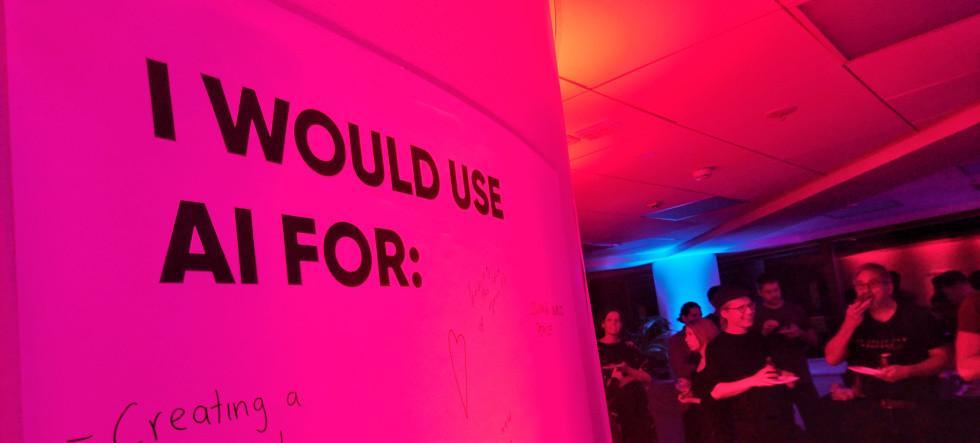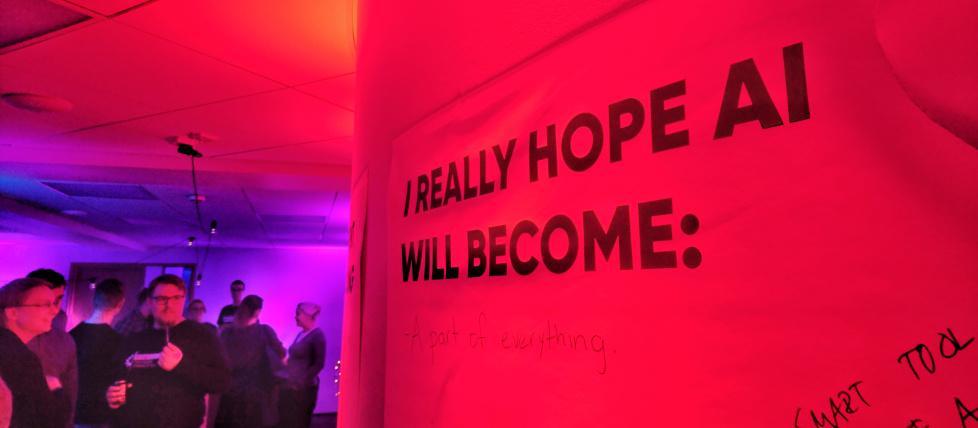Artificial intelligence and design – the demise of a designer?

Today’s reality is that artificial intelligence (AI) is coming fast to our daily lives. It already affects some of our surroundings and choices: just think about Netflix monitoring your preferences and suggesting new films to watch. Google keeps track of your searches and targeting you with adverts based on the data. Artificial intelligence (and technology in general) affects our lives whether we want it or not, but we can also affect AI by how we design and work with it.
Working with AI
Artificial intelligence and design is a hugely important topic, and luckily we have a lot of people in the IT community who realise that. Earlier in this month, I attended Turku AI Society’s AI & Design Meetup that was full of interesting talks and examples of AI in real life.
One of the things that came up in the meetup was that design world actually has many AI-powered tools already. Some examples include Google’s AutoDrawopens-in-a-new-tab and Picularopens-in-a-new-tab, colour matching algorithm Colormindopens-in-a-new-tab and font-matching tool Fontjoyopens-in-a-new-tab.
The common theme with these tools is that they can create a seemingly endless amount of variations. Whether it’s colours, templates, icons or other elements, artificial intelligence can process through huge amounts of data in the blink of an eye. So what does this mean? Will it eliminate a lot of unnecessary work and enable designers to create better designs than ever? Or will we all be out of work soon?
I would like to think that a designer’s job won’t vanish, but its focus may shift. As AI eliminates certain types of design tasks, a designer can act as a curator and focus on the user. Just like letterpress got taken over by desktop publishing and film was replaced by digital photography, AI may be the next technological advancement that enables us to focus on innovation and end-user instead of manual labour.
Other consequence of artificial intelligence taking over certain design tasks may be that the product/service development process speeds up. This can be seen as both positive and challenging: new innovations can be developed quicker, but also clients will have increasingly demanding expectations about project schedules and design tools and workflows need to adapt to this.

Designing AI
Another aspect of artificial intelligence becoming more common is that as well as working with AI, someone also has to design our future AI experiences. By designing AI, we end up designing ethics too, and that’s something we need to be aware of. If we just create intelligent algorithms without giving much thought to how they’ll interact with humans, the results can be pretty bad. We have probably all heard of some kind of AI experiment gone wrong: chatbots adopting the racist or sexist behaviour, Alexa not telling off kids for swearing etc.
Luckily, there’s a toolkit for designing intelligence augmentation: AIdesignkitopens-in-a-new-tab. It has been designed by a company that has also used an InMoovopens-in-a-new-tab robot to teach sign language to autistic children and researched why some experiments with social robots fail.
They suggest that the cause for many of the malfunctions is that the purpose of social robots hasn’t been defined well enough. Like many UX designers may agree, defining the problem is actually far more important than defining the solution.
To avoid bad experiences with AI and robots, designers working with them should use a framework with:
- Co-design
- Users’ and experts’ insights combined
- Ethical considerations
- Structured process
- And explicit design decisions
As well as design guidelines, it’s important to determine ethical guidelines for AI projects. The core guidelines for all project types should be:
- Physical safety
- Safety of data
- Correct behaviour enforcement
- Equality across users
- An appropriate level of transparency
- An appropriate level of emotional context
These guidelines provide a solid foundation for AI projects, but it’s also good to remember that this field of work is constantly changing and new challenges may surface as development goes on. What is granted, though, is that in the future the role of a designer will become increasingly important. There are a lot of ethical and practical considerations that need to be made when we use AI and we need many qualified, human-centred designers to take up the challenge.